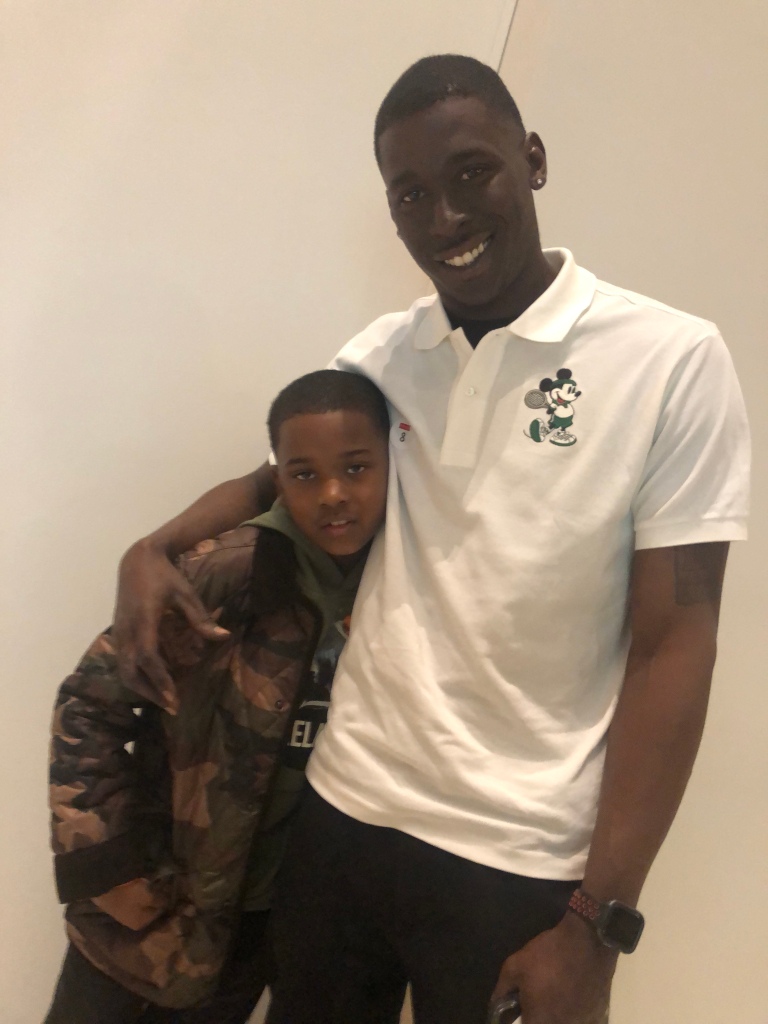
Reflections – Conversation: ATL Streetwear

Written by: Sophia V. Nelson
On Wednesday, January 8, 2020, the High Museum of Art hosted Conversation: ATL Streetwear, which was part of the educational programming accompanying the Museum’s temporary exhibition, Virgil Abloh: “Figures of Speech.” The event’s emcee, Kenny Burns, expressed that streetwear derives from people with limited traditional fashion-world resources, who have the desire to create. Burns was joined by Marina Skye, Kwassi Byll-Cataria, and Renaldo Nehemiah. Together the four discussed several sub-topics, including the evolution of how streetwear is worn, the creative and small business economy that is supported by streetwear consumers, and Atlanta’s past, present, and future influence on streetwear culture.


In Elena Romero’s book title Free Stylin: How Hip Hop Changed the Fashion Industry, former Vibe Magazine editor-in-chief, Emil Wilbekin, recalls Hip-Hop’s early influence on fashion stating, “When the stars started becoming stars and needing more outfits, and the music videos became more important, they gave people something to emulate and something to copy.” Panelist and Wish ATL creative director, Renaldo Nehemiah, credited Goodie Mob founding member, Big Gipp, as one of his earliest fashion influences. Kenny Burns saluted his hometown brethren, DC-gogo band E.U., for wearing bucket hats designed by DC-based urban wear brand, Univeral Madness, in the group’s chart-topping music video, “Doin’ the Butt.” That is when streetwear began to garner his attention.
When self-taught streetwear designers entered the marketplace, they were able to exercise a bit of creative control over things like fabric selection, patterns, and garment cut; still, the consumer decided on the desired clothing fit. Just before Hip-Hop gained mainstream popularity, slim fit ankle cut jeans, rugby shirts, and polos were some of the fashion trends of the time. And as Hip-Hop artists began to take on a larger than life persona, so did their clothing. Old press and advertisement photos of 90s streetwear brands like Cross Colours, Karl Kani, and Sean John demonstrates an era of clothing being produced for and worn in a baggier fit. Then something began to shift.
In 2008, rappers Jay-Z and T.I. released “Swagga Like Us,” in which Jay-Z exclaimed, “Can’t wear skinny jeans, cause my knots don’t fit.” Subtly, Jay-Z was acknowledging a shift in Hip-Hop fashion – streetwear consumers were beginning to seek slimmer fitting clothes. According to public record, Atlanta menswear boutique Moda 404, was established in 2008. Panelist, Kwassi Byll-Cataria, is one of the store’s co-founders. Burns said one of the reasons he began frequenting Moda 404 is because Byll-Cataria selected and retailed clothes designed to fit Black men. Adding, “his clothes made you look less boxy…you know us black men have got butts.”
An audience member inquired about the probability of successful streetwear enterprises having a positive impact on Atlanta’s workforce. The panelists responded with a description of the talent pool that is needed to produce a streetwear brand. Manufacturers, printers, and graphic designers are a few examples of the professional service persons involved in getting a clothing brand to market. This is an opportunity for various professionals to get a piece of the streetwear production pie. Another audience member, Adia of Flr-Pln, sought distribution advice for streetwear designers that currently do not have a brick and mortar. Panelist, art, and set director, Marina Skye attested to the contemporary significance of Pop-Up shops like Clark Atlanta University’s Market Thursday, which provides an opportunity for brands to connect with consumers.

Renaldo Nehemiah shared that whenever he is on travel, he makes it a point to wear Atlanta streetwear brands. He wants interested passersby to see what Atlanta’s streetwear culture has to offer. Nehemiah believes that Virgil Abloh is aware of all that Atlanta has to offer. He finds it no coincidence that Atlanta was selected as the 2nd city to host Virgil Abloh’s “Figures of Speech” exhibit. The first city to host the traveling exhibition was Chicago, which is not too far from Abloh’s birthplace Rockford, Illinois.

Kwassi Byll-Cataria suggests buying fashion is similar to purchasing art. Furthermore, Byll-Cataria feels consumers today are moved to buy based on the person behind the brand. Some may find the “Figures of Speech” exhibit design demonstrates Byll-Cataria’s theory. A selection of works on view provides a glimpse into Abloh’s various creative endeavors that preceded his appointment as Louis Vuitton’s menswear artistic director. After viewing the exhibit and examining the depth of Abloh’s creative work, see if you feel compelled to purchase a High Museum of Art x Virgil Abloh t-shirt for your collection.


A discussion on Abloh’s recent streetwear will “die” in 2020 comment, seemed to yield a disconcerted reaction from the room. Kenny Burns felt Abloh’s comment was irresponsible since there remains a talent pool that is committed to not only sustaining but evolving streetwear culture. Burns expressed his disappointment to a packed house that appeared to be the perfect mix of consumers, designers, and distributors. If Wednesday night’s attendance is any indication of the interest in Atlanta streetwear culture, then I do not foresee the market going anywhere anytime soon.


